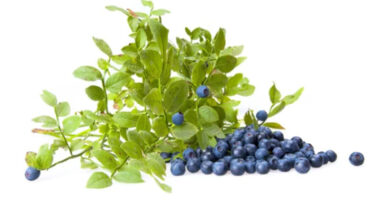The Effect of Ginger on Blood Sugar Levels
In March of 2019, the journal Medicine (Baltimore) reported on an analysis of eight studies on eating ginger to aid in blood sugar control. Results from all the reviews were combined as if they were outcomes of one large study of four hundred and fifty-four people who had been diagnosed with Type 2 diabetes. The participants who ate ginger, significantly lowered their HbA1c levels, while those who ate no ginger showed no change. From these results, the researchers concluded that consuming ginger helped reduce blood sugar levels over time.
Check out these related articles, too:
10 Great Weight Loss Foods For Diabetics
Diabetes and Kidney Disease – How to Prevent Them
Juice and The Effect It Has On Your Blood Sugar
SUPERFOODS FOR BLOOD SUGAR CONTROL
Almonds The Ultimate Diabetes Superfood
How to Lower High Blood Sugar With Diabetes Herbal Remedies
How To Know If You Have The Symptoms Of Low Blood Sugar
Although ginger does not provide much in the way of nutrients, it is low in calories and sugar. A quarter cup of ginger with 19 calories and 0.4 grams of sugar, has the following, expressed as a percent of the recommended daily allowance (RDA)…
- Vitamin C – 2%
- Niacin – 1%
- Vitamin B6 – 2%
- Folate – 1%
- Iron – 1%
- Fiber – 2%
The edible part of the ginger plant is the root. Ginger root may be eaten raw as a snack, although its concentrated flavor is a bit much for many people. “Crystallised” ginger with sugar, is not recommended for people with Type 2 diabetes. The good news is that ginger root is excellent for making a calming cup of tea or for use as a flavoring in a stir-fry. The simplest way to make ginger tea is merely to chop ginger root and let it steep in boiling water for a few minutes. A sugar substitute can be added to sweeten as needed. Some cooks like to add a small amount of lime juice. Ginger tea in a bag may also be purchased commercially.
Tasty Asian vegan and vegetarian dishes often make use of the fragrant ginger root. Allrecipes.com suggests making Indian curry with…
- vegetable oil,
- onion,
- ginger root,
- garlic,
- coriander,
- turmeric,
- lentils,
- cumin,
- vegetable stock,
- cauliflower,
- coconut milk,
- carrots,
- green beans,
- pepper,
- lemon juice,
- cilantro, and
- green beans.
Many more Indian, Thai, and various other ginger recipes can be found online.
Ginger is a tropical plant grown in Asia, Africa, and warmer regions of the United States. Ginger root from the grocery store…
- can be planted in rich, fertile soil that holds in water but does not get soggy,
- plant in the shade, about 2 to 4 inches deep,
- keep the ground wet and
harvest about 8 to 10 months after planting. In climates where the soil becomes colder than 55 degrees Fahrenheit, ginger can be grown indoors in pots. The stems and leaves make rather attractive houseplants, somewhat resembling bamboo.
The health benefits of ginger are worth exploring.
Although managing your disease can be very challenging, Type 2 diabetes is not a condition you must just live with. You can make simple changes to your daily routine and lower both your weight and your blood sugar levels. Hang in there, the longer you do it, the easier it gets.
For nearly 25 years Beverleigh Piepers has searched for and found a number of secrets to help you build a healthy body. Go to http://DrugFreeType2Diabetes.com to learn about some of those secrets.
The answer isn’t in the endless volumes of available information but in yourself.
Article Source: http://EzineArticles.com/10099050




